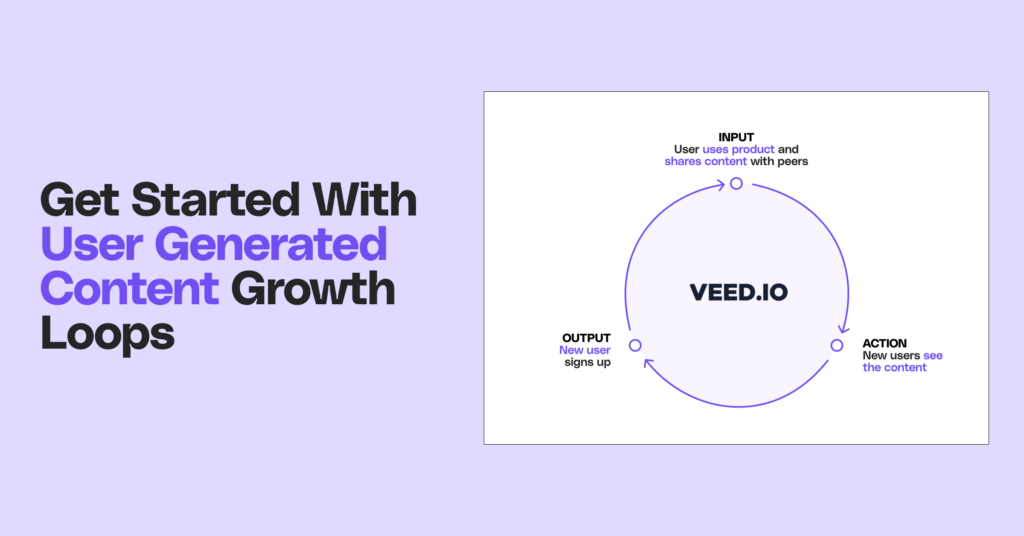A method of comparing two versions (A and B) of a webpage or marketing campaign to determine which performs better. This helps optimize elements for higher conversion rates.
The percentage of users who complete a specific onboarding process or take a key action within a product or service. A high activation rate is essential for user retention and long-term engagement.
A marketing mechanism where revenue generated from advertising is systematically reinvested into new ads to acquire more customers, creating a self-sustaining cycle of growth through continuous user acquisition and monetization.
Encouraging existing customers to promote your product or service. This often involves creating brand ambassadors who share positive experiences with their network.
Affiliate marketing is a performance-based approach where businesses reward individuals or entities for each customer they bring, leveraging partnerships to enhance online sales and visibility.
A growth mechanism where external partners (affiliates) promote a company's products or services in exchange for commission-based rewards on successful referrals, creating a self-sustaining cycle of customer acquisition through trusted content creators and specialized platforms.
Attribution modeling refers to the process of determining how credit is assigned to different marketing channels and touchpoints in the customer journey.
Average contract value refers to the total amount of money involved in a contract between two or more parties. It includes all the financial aspects outlined in the agreement, such as the cost of goods or services, any additional fees or charges, and the duration of the contract.
The percentage of customers who stop using a product or service within a given time frame. Managing churn is crucial for sustainable growth.
A growth mechanism where a company creates and distributes content using product revenue, which attracts new users and generates additional revenue for creating more content, forming a self-reinforcing cycle of growth and customer acquisition.
The percentage of website visitors or users who take a desired action, such as making a purchase or signing up for a newsletter.
The cost associated with acquiring a new customer. Calculated by dividing the total marketing expenses by the number of new customers acquired.
The predicted net profit a company expects to earn from a customer throughout their entire relationship. High CLV is essential for long-term success.
Customer segmentation involves dividing customers into specific groups or segments based on shared characteristics, preferences, or behaviors, to create personalized marketing campaigns and tailored experiences that resonate with each segment.
Demand generation refers to the process of generating and nurturing interest in a product or service among potential customers. It involves creating brand awareness, attracting prospects, and converting them into paying customers.
The Engagement Rate is a key indicator within Growth Marketing, assessing the extent of interaction that content, products, or services garner from their target audience.
Expansion revenue is additional income from existing customers via repeat purchases, upgrades, cross-sells, and renewals, focusing on enhancing the customer experience to drive ongoing engagement and broader product use.
The free to paid conversion rate quantifies the proportion of users evolving from accessing a product or service at no cost to purchasing it.
A go-to-market strategy is a well-defined plan outlining the target market, value proposition, marketing and sales strategies, and steps needed to effectively bring a product or service to market.
A data-driven approach to marketing that focuses on rapid experimentation and optimization to achieve sustainable growth, often through unconventional methods.
Growth loops can be defined as a series of actions and mechanisms that drive customer acquisition, engagement, and retention. They involve leveraging feedback loops to improve the overall user or customer experience, thus fueling further growth.
Growth marketing can be defined as a data-driven approach to marketing that focuses on driving customer acquisition, retention, and revenue maximization.
Collaborating with influencers who have a significant online following to promote a product or service. This leverages the influencer's credibility and audience.
A strategic collaboration where brands partner with industry influencers to drive targeted leads and sales through tracked recommendations, typically offering rewards for successful referrals while leveraging the influencer's credibility and audience trust.
An integration loop occurs when a company generates capital and reinvests this into integrations or partnerships, increasing the primary value promise of its users and attracting new ones.
Quantifiable metrics used to evaluate the success of a marketing campaign or business strategy. Examples include conversion rates, customer retention, and revenue growth.
A specific page on a website that a visitor can arrive at or "land" on, designed to guide visitors towards a specific action, such as signing up for a newsletter, downloading a white paper, or making a purchase.
The lead conversion rate refers to the percentage of leads that successfully convert into paying customers.
Lead generation is a critical component of growth marketing, a strategy aimed at driving sustainable business development by acquiring new customers, retaining existing ones, and increasing revenue.
The ratio of Customer Lifetime Value (LTV) to Customer Acquisition Cost (CAC). It helps assess the efficiency and sustainability of customer acquisition strategies. A ratio higher than 1 indicates a positive return on investment.
Marketing Automation involves leveraging software and technology to simplify repetitive marketing activities, optimize marketing processes, and evaluate the success of marketing initiatives.
A strategy where marketing plays a central role in driving business growth. It involves aligning marketing efforts with overall business goals and utilizing marketing insights to uncover new growth opportunities.
The average revenue generated per customer account on a monthly basis. Calculated by dividing total monthly revenue by the number of active customer accounts.
The total revenue a company expects to receive from its subscription-based customers on a monthly basis. MRR is a key metric for businesses with recurring revenue models.
A powerful growth marketing tool which involves testing multiple variables simultaneously to determine the best combination that drives the most user engagement, conversions, or other desired outcomes.
The net increase in annual recurring revenue after accounting for customer churn, downgrades, and upgrades. It reflects the overall growth or decline in subscription-based business models.
A metric that measures customer satisfaction and loyalty by asking customers how likely they are to recommend a product or service to others.
A process where existing users of a product or service actively promote and share it with others, who in turn become new users and continue the cycle, leading to business growth.
PPC, or pay-per-click, is a digital marketing tactic enabling businesses to pay for their website's placement in the 'sponsored' section of search engine results.
A data-driven approach that aims to generate leads, sales, and conversions based on specific actions performed by the target audience.
A growth strategy that leverages the product itself as the primary driver of customer acquisition, conversion, and retention. By providing an exceptional user experience and delivering value upfront, product-led companies are able to attract and retain customers more efficiently.
The automated process of buying and selling digital ad inventory in real-time through the use of software and algorithms.
The percentage of visitors or users who make a purchase. Analyzing the purchase rate provides insights into the effectiveness of marketing efforts and the overall appeal of products or services.
At its core, a referral code is a unique combination of numbers, letters, or both, that can be used to track and identify customers who are referred to a business by an existing customer.
A form of compensation provided to individuals or entities for successfully referring new customers to a business, typically structured as flat rates, percentages, or recurring payments to incentivize word-of-mouth marketing and customer acquisition.
A unique URL assigned to a customer or advocate to track referrals. This link is used to attribute new customers to the referring individual.
A strategy that encourages and incentivizes individuals to refer others to a particular product or service. It capitalizes on the natural inclination of people to share positive experiences and recommendations with their social network.
A strategic growth mechanism where businesses incentivize existing users to recommend their products or services to other businesses, typically offering meaningful rewards for successful referrals while leveraging professional networks to drive customer acquisition and revenue growth.
A system for monitoring and measuring the effectiveness of referral programs by capturing data about referral sources, conversions, and customer behavior through various methods like unique codes, cookies, and analytics tools to optimize referral marketing strategies.
A metric that measures the percentage of customers who choose to continue their subscription or service with a company after their initial contract period ends.
ROI is a financial metric that provides insights into the financial performance of an investment by determining the net gain or loss generated over a specific period relative to the investment's cost.
Revenue retention rate refers to the percentage of revenue that a business successfully retains from existing customers over a specific period.
SaaS metrics act as a compass, providing valuable insights into various aspects of a company's performance. They allow businesses to identify trends, measure the effectiveness of strategies, and make data-driven decisions to optimize performance.
The process of orienting new users to a software application; it involves installing and setting up the software, and encompasses introducing users to its features and functionalities.
A growth strategy where revenue generated from customers is reinvested in hiring sales representatives who acquire new customers, creating a continuous cycle of growth that is particularly effective for products requiring human interaction to demonstrate value.
A business growth model where sales activities play a pivotal role in driving overall business growth. It involves integrating sales strategies into every aspect of the organization, ensuring the sales team holds a central position in business decision-making and strategic planning.
The percentage of website visitors or users who sign up for a service or create an account. Monitoring this metric helps optimize the user journey and identify potential friction points.
The influence that the actions and opinions of others have on an individual's decision-making. Testimonials, reviews, and user-generated content are forms of social proof.
A collaborative content creation approach where suppliers actively contribute to a company's content marketing efforts through their expertise and insights, creating a self-reinforcing cycle of content generation and distribution that drives engagement and growth.
Viral loops are marketing strategies designed to exponentially increase product or content visibility and user acquisition through a process where existing users refer others, creating a self-sustaining cycle of growth and promotion.
A strategy that relies on existing social networks to spread information rapidly. Viral marketing often involves creating shareable content that resonates with a wide audience.
SaaS offers ready-to-use cloud software, while platforms provide tools to build custom solutions.
Promoting a product or service through customer recommendations and referrals. Positive word-of-mouth is a powerful driver of growth.
Resources
Related articles

7 Best B2B Referral Software (2025 Guide)
Which referral software should I choose? In the world of referral marketing, choosing the right ...

Scaling and Maintaining a B2B User Referral Program
Learn how to set the right incentives for B2B SaaS user referral programs

What are User Generated Content Growth Loops?
User Generated Growth (UGC) loop is a growth engine where users create content that attracts ...

